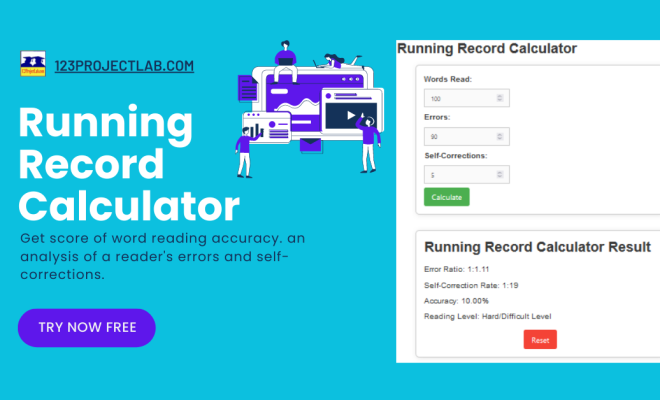How to calculate reading accuracy

Reading accuracy is an essential aspect of improving literacy skills and monitoring a reader’s progress. It refers to the percentage of words read correctly in a given text. By understanding how to calculate reading accuracy, educators and parents can help students hone their reading proficiency and set appropriate goals for improvement. In this article, we will discuss the steps necessary to determine reading accuracy, and learn how it can be beneficial in bolstering an individual’s reading development.
Step 1: Choose a Text
Select a text appropriate for the reader’s level. Ideally, this passage should present a reasonable challenge yet remain within their skill range to yield an accurate representation of their abilities. Keep in mind that overly complex texts may discourage readers and result in a lower calculated accuracy that does not portray their true potential.
Step 2: Select a Sample Size
Choose a sample size based on the length of the selected text or specific instructional purposes. For more accurate results, consider using longer reading samples. A common sample size is 100 words, as it simplifies the calculation of reading accuracy percentages.
Step 3: Have the Reader Begin Reading
Ask the reader to start reading aloud from the chosen text. As they read, follow along in your copy of the material and make note of any misreads or errors they commit. These may include omissions, substitutions, insertions, repetitions, or self-corrections.
Step 4: Count Errors and Calculate Reading Accuracy
Upon completing the passage, tally up the total number of reading errors made using your notes from Step 3. To determine reading accuracy, use the following formula:
Reading Accuracy = (Total Words – Errors) / Total Words x 100%
For example, if a reader worked through a 100-word passage and made ten errors:
Reading Accuracy = (100 – 10) / 100 x 100% = 90%
In this case, the reader’s reading accuracy would be 90%.
Benefits and Applications of Calculating Reading Accuracy
1. Progress Monitoring: By assessing reading accuracy over time, educators and parents can track a reader’s development and identify areas that may require additional attention.
2. Goal Setting: Setting attainable goals based on calculated reading accuracy allows for targeted growth that meets individual needs.
3. Instructional Differentiation: Understanding a student’s reading accuracy helps to inform instructional choices, such as selecting appropriate texts, adjusting pacing, or determining scaffolding strategies.
Conclusion
Calculating reading accuracy is a valuable tool to support readers on their literacy journey. From benchmarking progress to tailoring instruction and informing goal-setting, measuring reading accuracy empowers individuals to optimize their skill development and ultimately achieve greater fluency. By following these steps and applying the proper understanding of reading accuracy, educators and parents can help cultivate confident lifelong readers.






